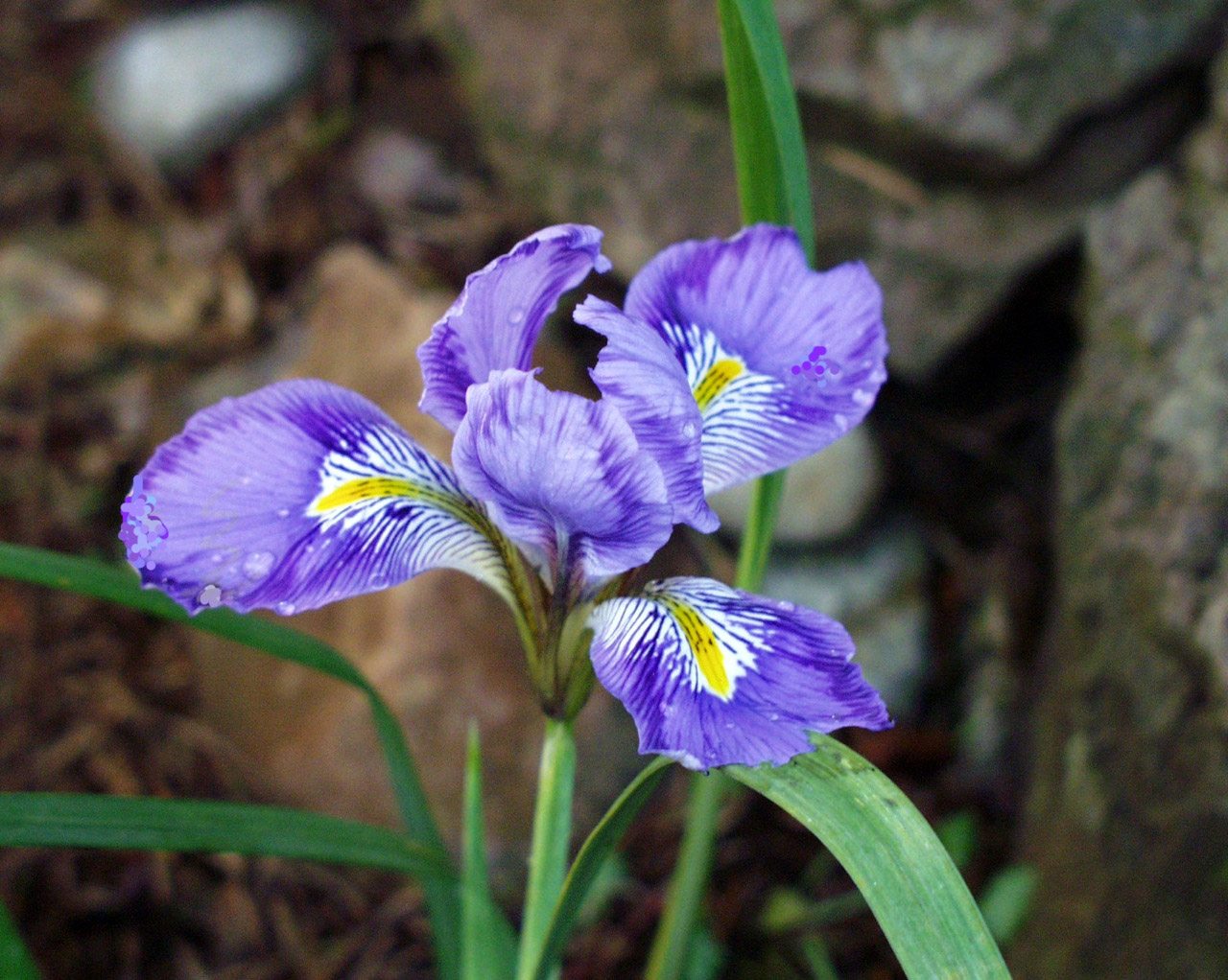Our variable weather at this time of year has plants and gardeners confused. Last week we had a trace of snow. This afternoon is fine and sunny.
Friends and readers call me, worried for their earliest bloomers. “What if it freezes again,” they ask. “Will it kill my spring bulbs?” Here is my best advice. Don’t worry. Bulbs are resilient plants and there is nothing you can do to hold them back.
Relax and enjoy this phenomenon of nature. Our job is to tend the garden, not control the results. Mother Nature knows more and has been gardening longer than any of the experts.
Many bulbs like crocus and daffodils have already sent up new growth. Grape hyacinths, in particular, always sprout some leaves in fall and carry them through the winter. One of my favorite sights in the late winter-early spring garden is the sunny yellow crocus blooming through a light
dusting of snow. The deep blue iris “Harmony,” with its little blaze of gold, will often bloom the morning after a freeze. Iris unguicularis is the first to bloom in my garden every year.
The lesser-known group of tulips called “species” tulips is unaffected by inclement weather conditions. These won’t draw many oohs and aahs for their flower size, but for the serious gardener they are without a doubt a more interesting and reliable perennial tulip alternative. Try Tulipa bakeri “Lilac Wonder.” This cheerful tulip has large rose-lilac petals with contrasting yellow bases and anthers. “Red Riding Hood” is an award winner for more than just its carmine-red petals with an ink-black base. The foliage is marked with a mottled, taupe-gray for interest even after the flowers fade.
Did you forget?
Quite often, friends tell me that they never got around to planting the bulbs they bought last fall for this year’s spring garden. Unless you can store those bulbs in ideal conditions until next September, I recommend you plant them in the ground now. This is, after all, the time of year when you can see exactly where you want spring-blooming bulbs to flower in your garden. Although they won’t bloom this year, hardy bulbs will be able to get in sync with nature and flower on schedule next spring.
If you decide this spring that you would like to have more spring-blooming bulbs in your garden next year, here are a few ideas to help make it happen. Save your favorite bulb catalog as a reference. Take it with you to the garden center and to open garden visits. Leave it in your car so you can find it when you need it. When you see a flowering bulb that you want for your own garden, look it up in your catalog, circle the exact variety that you like, and make a note of where you want to plant them.
Make the note now. Believe me, unless you write it down now, you will not remember the name of “that big, peachy-colored tulip” you loved so much when it comes time to plant bulbs in autumn. Once the spring bulb season has passed, save the catalog and all of your information in a place where you can find it come September. Let the arrival of next year’s fall catalogs be your reminder to transfer your bulb choices from the old reference catalog to the new one. Order and plant.
Planting guidelines
There are some long-established guidelines for planting perennials that are worth reconsidering each spring as you add new plants to the garden. Planting in groups of three is usually better than one plant by itself. Five has an even stronger impact and gives the border a lush, generous feel. Plant in a triangular pattern, with a plant at each point of the triangle, rather than in straight lines. Space each plant considering its mature size. Plants may look sparse at first but will grow into each other with room for each plant to mature to its natural form.
Consider all the elements of design when creating a garden, including the balancing principles of contrast and repetition. Garden plants come in every shape, size, texture and color. Mix them up and play them off one another. My favorite suggestion is to break all the rules. Many of my favorite gardens belong to plant collectors with one of every plant they could find for their garden. The most enjoyable gardens to visit are those that mirror the unique personality of the gardener. Let your own nature be your guide.
Robb Rosser is a WSU-certified master gardener. Reach him at Write2Robb@aol.com.



